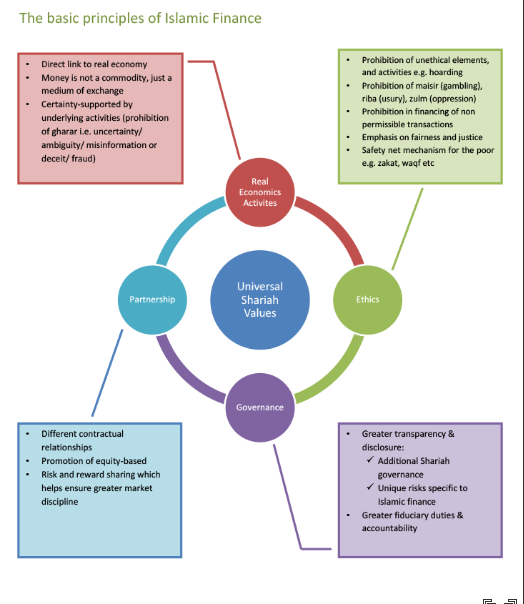Amortizing Bond Premium Using the Effective Interest Rate Method
Contents:


This example shows how to account for bonds issued at a premium. If a bond sells at a premium, a) interest expense can not be calculated. B) cash interest will equal interest expense each period. Bonds issued at a premium always have; A) Interest expense less than the interest payments.
- This results in a constant rate of interest over the life of the bond.
- You may also want to consult your company’s counsel on the matter.
- These examples illustrate the accounting procedures used for discounts.
- Sometimes a bond may pay a variable rate of interest or provide an interest-free period, and the ABP could exceed the interest income.
- Therefore, bond discounts or premiums have the effect of increasing or decreasing the interest expense on the bonds over their life.
- If the bond is issued at a premium, interest expense is always lower than coupon payment, and decreases over time.
Both methods record the same amount of interest over the term of the bond. However, the difference is in how much is recorded each period and how it is calculated. Similarly, if the company sells the bonds with a $2,000 premium, the company would debit the cash account for cash received, which would total $202,000 ($200,000 + $2,000). They would also credit Premium on Bonds Payable for the amount of the premium, $2,000. If the company sells the bonds with a $2,000 discount, the company would debit the cash account for the cash received, $198,000 ($200,000 – $2,000) and debit Discount on Bonds payable for the amount of the discount, $2,000.
Using this method, by the time the bond matures, the carrying value will be equal to the face value. For example, using the aforementioned $200,000 bond sale and a discount, we would recognize the $10,000 semiannual interest payment plus the $200 discount amortization as a debit to interest expense for a total of $10,200. We would also credit discount on bonds payable for $200 and credit the cash account for $10,000. Amortization is an accounting method that systematically reduces the cost of an asset over time. It spreads the effect of a bond discount or premium over the term of the bond.
Premium Investing Services
In the case of any bond the interest on which is excludable from gross income, no deduction shall be allowed for the amortizable bond premium for the taxable year. As you can see, according to the straight-line method the amortization of premium is the same for all periods. However, for the effective interest rate method, the amortization of premium is greater as time passes by. The Level 1 CFA Exam is approaching, so we have to keep up the pace. Today, let’s discuss the methods of amortizing bond discount or premium.
- Let’s calculate the amortization for the first period and second period.
- Additionally, bonds that are issued at a premium will be those with a market rate that is less than the bonds stated rate.
- This is the amount of the coupon payment, based on a percentage of the par value.
- The amount that is amortized in each period forms part of the expenses.
- In effect it reduces the higher-than-market interest rate that the issuer is paying on the bond.
When a bond is issued at a premium, that means that the bond is sold for an amount greater than the bond’s face value. This generally means that the bond’s contract rate is greater than the market rate. Like with a bond that is sold at a discount, the difference between the bond’s face value and sales price must be amortized over the term of the bond.
Bonds Issued at a Premium
The effective interest rate is the percentage of carrying value over the life of the bond. It is established when the bond is issued and remains constant in each period. For this method, the interest expenses recorded equals the constant percentage of the carrying value of the bond.
CSQ: Premium Persists, Keeping This A Hold For Now (NASDAQ … – Seeking Alpha
CSQ: Premium Persists, Keeping This A Hold For Now (NASDAQ ….
Posted: Fri, 03 Mar 2023 08:00:00 GMT [source]
Understand straight-line amortization of bond discounts. The straight-line method of amortization records the same amount of interest expense in each interest period. For each period until the bond matures, the balance in discount and bonds payable will decrease by the same amount until it has a zero balance.
Latest in Accounting and Financial News
This means that the Cash account will be credited for $4,500 on each interest payment date. Calculating Bond Premium amortized can be done by any of the two methods mentioned above, depending on the type of bond. However, the difference arises in the pace of interest expenses. AmortizationAmortization of Intangible Assets refers to the method by which the cost of the company’s various intangible assets is expensed over a specific time period. This time frame is typically the expected life of the asset.
For our $2,000 premium or discount, this means recording $200 amortization each time. The bond premium or discount is amortized over the life of the bond by what is known as the interest method. This results in a constant rate of interest over the life of the bond. Bond interest expense is increased by amortization of a discount and decreased by amortization of a premium. The remaining amounts of qualified stated interest and bond premium allocable to the accrual period ending on February 1, 2000, are taken into account for the taxable year ending on December 31, 2000. Although A receives an interest payment of $10,000 on February 1, 2000, A only includes in income $8,881.83, the qualified stated interest allocable to the period ($10,000) offset with bond premium allocable to the period ($1,118.17).
The first step in calculating the premium amortization is to determine the yield to maturity , which is the discount rate that equates the present value of all remaining payments to be made on the bond to the basis in the bond. If a bond’s interest rate differs significantly from the overall market rate for similar bonds, the bond will be sold at either a premium or a discount. Similarly, when inflation is on the rise, bond prices fall. Finally, bond issuers and specific bonds are rated by credit rating agencies. An issuer with a high credit rating is likely to get higher prices for a bond. The amortization of bond premium on long-term debt should be presented in a statement of cash flows as a O addition to net income.
For example, suppose your company issues a $1 million par value bond for $1.041 million that matures in 5 years. The bond pays 9 percent interest, or $4,500 semiannually, while the prevailing annual interest rate is only 8 percent. At issue, you debit cash for the $1.041 million sale proceeds and credit bonds payable for $1 million face value. You plug the $41,000 difference by crediting the adjunct liability account “premium on bonds payable.” SLA reduces the premium amount equally over the life of the bond. In this example, you semi-annually debit the premium on bonds payable by the original premium amount divided by the number of interest payments, which is $41,000 divided by 10, or $4,100 per period.
When using https://1investing.in/ to calculate the accretion or amortization, a log file will be created with the details of the calculation. The log file is named “ACRAMT_log.csv”, and will be placed in the current user’s AppData\Roaming\Fund Manager folder . When using Fund Manager to calculate accretion and amortization it is best to record the purchase date as of the settlement date, rather than the trade date. A daily roundup of the latest from around the accounting and financial industry. Hearst Newspapers participates in various affiliate marketing programs, which means we may get paid commissions on editorially chosen products purchased through our links to retailer sites.
By the time the bonds reach maturity, their carrying value will have been reduced to their face value of $100,000. Although the borrower receives all of the funds at the time of the issue, the matching convention requires that it be recognized over the life of the bond. See a comparison between secured vs unsecured bonds, and term bonds vs serial bonds. Premium on bonds is the amount that added to face value of the bond to calculate for carrying value. Amortization will decrease this amount and decrease the carrying value as well. D. Increases the carrying value of a bond and decreases interest expense.
Bonds that result in a premium or a discount should be amortized by either applying the effective interest method or the straight-line method. For your exam, it is very important that you understand how to calculate the periodic amortization expense that will be applied to the premium or the discount. Suppose the company issues 2000 bonds for $ 22,800 each, and the face value of the bonds is $ 20,000. The bonds are to be redeemed after a period of 10 years at face value. The coupon rate of bonds is 10%, and the market rate of interest stands at 8%. Once the bond premium is calculated, you need to decide how the bond premium shall be amortized.
In the example above, if Janice did not elect to amortize the premium, then at maturity there would be a $30 long-term capital loss (sales proceeds of $1,000 less $1,030 paid for the bond). For simplicity, let’s assume that the annual amortization is $10 every year. The $40 (4% coupon on $1,000 par value bond) of interest income could be reduced by $10 each year.
2022 Instructions for Schedule CA (540)California Adjustments … – Franchise Tax Board
2022 Instructions for Schedule CA ( California Adjustments ….
Posted: Mon, 02 Jan 2023 23:08:17 GMT [source]
The interest process costings on the bond are qualified stated interest. Therefore, the sum of all amounts payable on the bond is $100,000. Under § 1.171–1, the amount of bond premium is $10,000 ($110,000−$100,000).
On 1 January 2022, Robots, Inc. issued 4-year bonds with a total par value of USD 100 million and an annual coupon that amounts to 8% of the par value. The effective annual interest rate at issuance was equal to 7%. For 1999, A includes in income $8,141.68, the qualified stated interest allocable to the period ($9,166.67) offset with bond premium allocable to the period ($1,024.99). Under § 1.1016–5, A’s basis in the bond is reduced by $1,024.99 in 1999. As is to be expected, the calculation for Straight-Line is more straightforward than the Effective Rate Method outlined above. We can use the example of the Series 2022 Bonds we used for our effective interest rate calculations.
Fitch Affirms North Tarrant Express Mobility Partners (NTE 1 & 2)(TX … – Fitch Ratings
Fitch Affirms North Tarrant Express Mobility Partners (NTE 1 & (TX ….
Posted: Tue, 29 Nov 2022 08:00:00 GMT [source]
The premium of $7,722 is amortized using either the straight-line method or the effective interest method. An overview of these methods, using discount and premium examples, is given below. The key difference is that the cash flows are discounted at the semi-annual yield rate of 5%. The table below shows how to determine the price of Valenzuela Corporation’s 5-year, 12% bonds issued to yield. The amortization of the bond discount \rule the carrying value of the bond, while the amortization of the bond premium \rule the carrying value of the bond.

This amount will reduce the balance of either the discount or premium on bonds payable. If they are using straight-line depreciation, this amount will be equal for every reported period. For simplicity, we still stick to using this method in the example.Imagine that for our example $200,000 bond issue, the bond makes a coupon payment twice per year, or every six months. This means that we will make two entries per year that record interest expense. Additional entries must be made at the same time for the proper amount of amortization of premiums or discounts. In the EIRA, you figure each amortization payment by reducing the balance in the premium on bonds payable account by the difference between two terms.

The preferred method for amortizing the bond premium is the effective interest rate method or the effective interest method. Under the effective interest rate method the amount of interest expense in a given year will correlate with the amount of the bond’s book value. This means that when a bond’s book value decreases, the amount of interest expense will decrease. In short, the effective interest rate method is more logical than the straight-line method of amortizing bond premium. Bonds PayableBonds payable are the company’s long-term debt with the promise to pay the interest due and principal at the specified time as decided between the parties. A bond payable account is credited in the books of accounts with the corresponding debit to the cash account on the issue date.
Tinggalkan Balasan